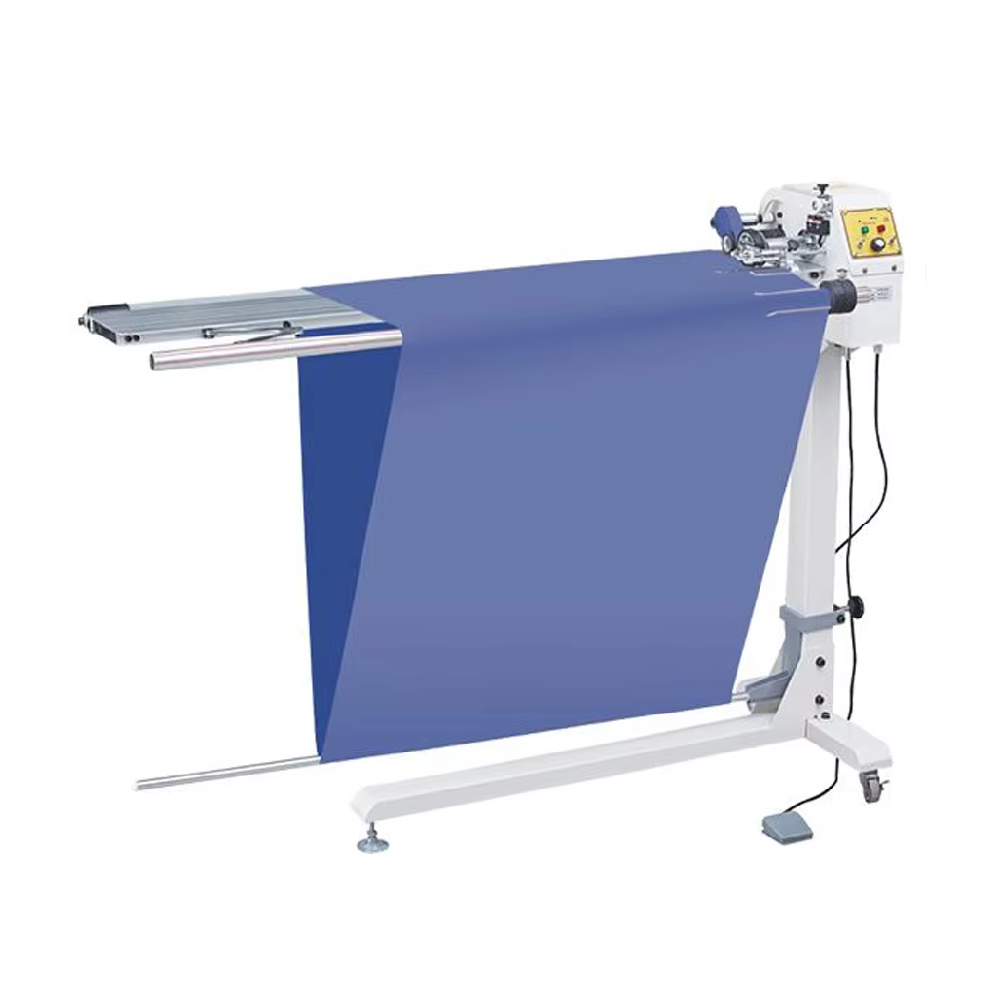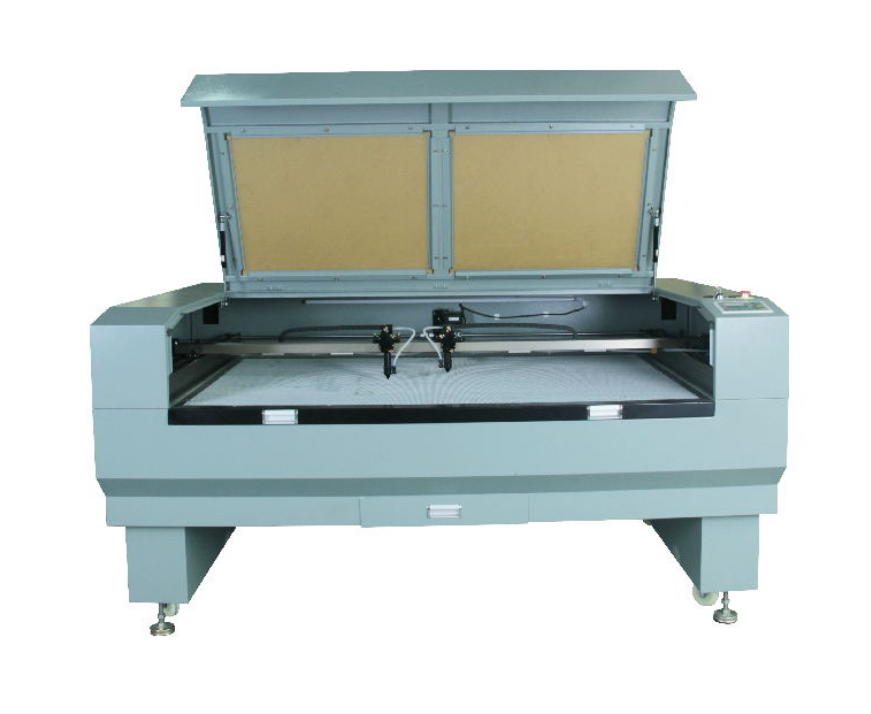How Cloth Cutting Machines Revolutionize Workshop Efficiency
From Manual Labor to Automated Precision
Switching from old school hand cutting methods to modern automated cloth cutting machines really boosted accuracy across the garment manufacturing sector. The machines basically eliminate those little mistakes people make when cutting fabric by hand, so every piece comes out looking pretty much the same quality wise something that matters a lot these days with so many competitors in the market. What makes these machines so good? Well, they cut each piece exactly like the last one, which means fewer defective items ending up in the waste bin. Factory managers tell us that bringing automation into their workflow cuts down on both money spent on labor and production time, letting them get finished products to stores faster than before. And let's face it this kind of efficiency is what keeps manufacturers ahead of the game nowadays when customers want things made right and delivered quick.
The Time-Saving Power of Computerized Pattern Execution
Cloth cutting machines with computerized pattern execution offer something truly revolutionary when they handle several cutting patterns at once, cutting down production time significantly. Most shops now rely on CAD software for these operations. The software lets operators tweak patterns on the fly depending on what kind of fabric they're working with and the actual design requirements. This means less wasted material overall. Some studies indicate that factories using these computer systems save around half their labor hours compared to traditional methods. Beyond just speeding things up, this kind of efficiency gives manufacturers flexibility to respond faster when customer needs change, helping them stay ahead in what's becoming an increasingly cutthroat market for textile producers.
Key Features Driving Efficiency in Modern Cutting Equipment
Automation Capabilities in Fabric Handling Systems
Cloth cutting machines today are changing how factories work by adding automated fabric handling systems. These new setups can actually move fabric into cutting machines without much human help, cutting down on the need for workers to handle materials manually. When we automate these tasks, there's less chance of mistakes happening, plus operations run smoother from start to finish, which means more stuff gets made each day. Factories using these systems often see their productivity jump quite a bit. Some places even report getting around 30 percent more output after installing them. For manufacturers looking to stay competitive, bringing in this kind of automation makes good business sense. It puts them ahead of others who haven't caught up yet, especially as the whole textile industry keeps moving toward smarter ways of making products faster and better.
Precision Cutting for Complex Garment Patterns
Getting cuts just right matters a lot in today's clothing production, especially when dealing with complicated patterns where mistakes simply won't cut it. The top notch cutting equipment out there comes equipped with smart sensors that tweak where blades go as they work, making sure each piece gets cut accurately every single time. What makes all this so valuable? Well, precise cutting means less wasted fabric and better overall fabric usage rates something manufacturers in sectors needing tight measurements really appreciate. Most people working in the field agree that bringing these cutting technologies into the workflow does more than just improve finished product quality it actually helps ensure different parts of garments come together properly when sewn together later on. For companies trying to keep up with customers wanting increasingly detailed clothing designs while still maintaining standards of excellence and efficient material use, spending money on good cutting systems makes complete sense from both practical and economic standpoints.
High-Speed Operation Without Compromising Accuracy
The textile manufacturing sector moves at lightning speed these days, so being able to work quickly without sacrificing accuracy gives companies an edge. New generation cutting machines actually live up to this promise through their advanced blade systems and powerful motor setups. Fabric shops report they can slice materials around 40 percent quicker compared to older techniques, yet still keep the fabric intact and cuts sharp and clean. Industry tests back this up time and again showing no drop in quality when running at top speed. Factories equipped with these machines get double benefits fast turnaround times plus rock solid precision levels. This means manufacturers don't have to choose between going fast or staying accurate. For shops looking to grow production capacity without compromising on quality standards, investing in these next level cutting solutions makes total business sense.
Types of Cloth Cutting Machines Transforming Production
Laser Cutting Systems for Delicate Fabrics
Laser cutting has really changed the way we work with delicate fabrics, giving us much better precision while keeping fraying to a minimum. These systems use concentrated laser beams to make those clean, detailed cuts that just aren't possible with older techniques. One big plus? Studies show that laser tech cuts down on fabric damage by around 60 percent, which means less wasted material overall. What makes this so valuable is that it works great even on super sensitive materials like silk or thin synthetics, letting designers push boundaries in ways they couldn't before. Plus, these machines run faster than traditional cutters and actually consume less power in the long run. For anyone in the textile business looking to modernize their operations without breaking the bank, laser cutting seems like an obvious choice right now.
Computerized Blade Machines for Bulk Operations
For bulk operations, computerized blade machines have become game changers, letting manufacturers slice through massive quantities much faster than traditional methods. Many models come equipped with smart pattern recognition features that basically do the thinking work for operators, making the whole cutting process go smoother and boosting output across the board. According to folks who know the industry inside out, these sophisticated systems can actually crank production rates upwards of 200% in some cases something that makes a world of difference when time is money. What's really nice about all this automation is how it cuts down on hands-on labor requirements while still keeping fabric quality consistent even during those rush periods when demand spikes unexpectedly.
Water Jet Technology for Multi-Layer Material Processing
Water jet tech has become quite revolutionary when cutting through multiple layers of materials. The system works by shooting super pressurized water streams that slice right through different layers without causing any warping or deformation. For manufacturers dealing with complicated patterns or detailed artwork on fabrics, this approach makes all the difference. Textile engineers point out how these water jets create cleaner edges across stacked materials while keeping each layer intact during the cutting process. What really matters in production settings is that water jetting handles both simple and elaborate designs with equal precision. Plus, since there's no heat involved unlike laser cutting methods, the final product maintains better structural integrity. Many textile factories have started integrating water jet systems into their workflow because they simply produce better results faster than traditional mechanical cutters, especially when working with delicate or sensitive fabrics.

Maximizing Material Utilization Through Advanced Cutting
Nesting Software for Optimal Fabric Layout
The right nesting software can really transform how textiles are cut and laid out in manufacturing operations. These programs look at fabric patterns and measurements to figure out where each piece should go on the roll, which means way less wasted space between cuts. Manufacturers who have adopted this technology report saving thousands on materials alone while keeping their environmental impact down too. Some factories saw fabric usage drop anywhere from 20% to almost 30% after implementing good nesting solutions according to industry reports. Beyond just saving money though, these efficiency gains matter because they cut down on leftover scraps that would otherwise end up in landfills across the country.
Error-Reduction Algorithms Minimizing Waste
The cutting tech world has seen some pretty cool improvements lately, especially with new error-reduction algorithms that help cut down on wasted materials. Basically, these smart systems can spot problems as they happen during the cutting process and tweak things on the fly so mistakes don't turn into scrapped fabric. Some manufacturers who've adopted this tech tell us their waste levels dropped around 15 percent after implementation. The savings add up fast when looking at production costs, and factories run smoother too. For textile businesses trying to stay ahead of competitors, investing in better cutting solutions makes all sorts of business sense.
Integrating Cutting Machines into Smart Production Lines
IoT-Connected Cutting Systems for Real-Time Monitoring
When production lines incorporate IoT connected cutting systems, manufacturers gain access to live data streams that track how machines actually perform day to day. The ability to monitor equipment in real time makes predictive maintenance much more effective. These smart systems catch problems early on before minor issues turn into major breakdowns, which cuts down on unplanned stoppages and keeps the factory floor moving smoothly. Factory managers have seen results too many plants adopting IoT solutions report around 25% better efficiency numbers after implementation. Beyond just keeping machines humming along at peak levels, continuous monitoring helps avoid those surprise repair bills that pop up when things go wrong unexpectedly. And let's face it nobody wants subpar products rolling off the assembly line because some component failed silently last week.
Automated Workflow Coordination with Sewing Stations
When cutting machines talk to sewing stations through automated systems, factories are seeing major gains in how fast they produce goods. These connected systems create smooth transitions between different parts of the manufacturing process, so there's less downtime and better control over what gets made when. According to recent reports from textile manufacturers, plants that integrated these technologies saw their productivity jump around 30%. The main reason? Everything runs smoother when operations are synced up properly. Machines don't sit idle waiting for materials anymore, workers spend less time fixing bottlenecks, and quality remains consistent throughout long production runs. For garment makers dealing with complicated designs or tight deadlines, having centralized control over all these moving parts makes a world of difference. It's not just faster production either – the whole factory floor operates like clockwork once these systems are in place.
Frequently Asked Questions
How do cloth cutting machines enhance precision in garment manufacturing?
Cloth cutting machines enhance precision by minimizing human error and using advanced sensors and software to ensure each cut is identical, improving garment quality significantly.
What role does CAD software play in cloth cutting machines?
CAD software allows for real-time pattern adjustments and optimizes fabric use, enhancing efficiency and reducing production time and waste in the manufacturing process.
How does automation improve cloth cutting efficiency?
Automation in cloth cutting reduces labor needs and human error, ensuring continuous operation and improved throughput, ultimately boosting production efficiency.
What is the benefit of integrating IoT in cloth cutting machines?
Integrating IoT into cloth cutting machines allows for real-time monitoring and predictive maintenance, enhancing operational efficiency and reducing costs by addressing potential issues proactively.
Table of Contents
- How Cloth Cutting Machines Revolutionize Workshop Efficiency
- Key Features Driving Efficiency in Modern Cutting Equipment
- Types of Cloth Cutting Machines Transforming Production
- Maximizing Material Utilization Through Advanced Cutting
- Integrating Cutting Machines into Smart Production Lines
- Frequently Asked Questions

